Imagine driving with your smartphone seamlessly connected to your car, delivering navigation, music, and hands-free communication without a single cable in sight. A wireless CarPlay adapter makes this possible by bridging your smartphone and car infotainment system. It uses Bluetooth for initial pairing and Wi-Fi for robust data transfer, ensuring uninterrupted functionality.
-
The automotive smartphone integration market is growing rapidly, driven by the demand for connected vehicles.
-
Wireless audio solutions in cars are experiencing over 12% annual growth, highlighting consumer preference for cable-free technology.
-
By 2032, the market for automotive smartphone integration will expand from $2.5 billion to $10.3 billion, reflecting a CAGR of 17.1%.
These trends underscore the importance of solutions like wireless CarPlay adapters. They integrate effortlessly with modern car infotainment systems, enhancing your driving experience while eliminating cable clutter.
Key Takeaways
-
Wireless CarPlay adapters link your phone to your car without wires. This makes it easier to use and keeps things tidy.
-
These adapters use Wi-Fi to send data quickly. This helps with smooth maps, music, and calls without holding your phone.
-
Update your adapter's software often to make it work better. This also helps it match your phone's updates.
-
Make sure your car works with wireless CarPlay before buying an adapter. This will save you from problems later.
-
Keep your adapter away from other gadgets to avoid signal issues. This helps keep the connection strong and steady.
How Wireless CarPlay Adapters Work
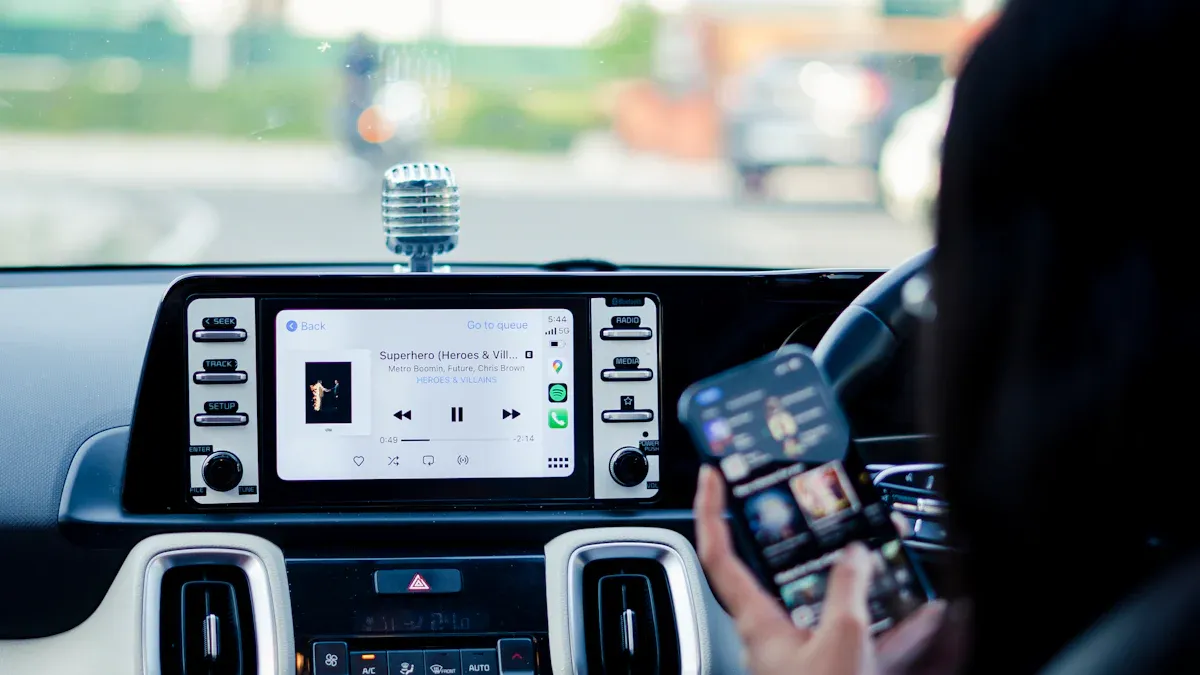
Wi-Fi Direct and Wireless CarPlay
Wireless CarPlay adapters rely on Wi-Fi Direct technology to establish a high-speed connection between your smartphone and your car's infotainment system. Unlike traditional Wi-Fi networks, Wi-Fi Direct creates a peer-to-peer link, eliminating the need for a router. This connection ensures that data transfer remains fast and stable, even in environments with multiple wireless devices.
Wireless CarPlay operates on a 40MHz wide channel, delivering a maximum link speed of 300 Mbps. For typical usage, it consumes around 10-11 Mbps of bandwidth, which is sufficient for streaming music, navigation, and voice commands simultaneously. While wireless CarPlay has a slightly higher round-trip time (RTT) compared to wired CarPlay—approximately 1000ms versus 700ms—it compensates with seamless integration and reduced cable clutter.
|
Feature |
Details |
|---|---|
|
Wi-Fi Standard |
Wi-Fi 4 (802.11n) |
|
Channel Width |
40MHz wide channel 38 |
|
Maximum Link Speed |
300 Mbps |
|
Bandwidth Usage for CarPlay |
10-11 Mbps |
|
Round-Trip Time (RTT) |
Wired CarPlay: ~700ms, Wireless CarPlay: ~1000ms |
Bluetooth Pairing Process
The initial setup of a wireless CarPlay adapter begins with Bluetooth pairing. When you activate the adapter, it scans for nearby devices and establishes a connection with your smartphone. This process is straightforward and typically takes only a few seconds.
Bluetooth pairing serves as the handshake between your phone and the adapter. It ensures that the devices recognize each other and exchange essential information, such as authentication credentials. Once paired, the adapter transitions to Wi-Fi for data transfer, allowing for faster speeds and higher bandwidth.
Transition to Wi-Fi for Data Transfer
After the Bluetooth pairing process, the wireless CarPlay adapter automatically switches to Wi-Fi for data transfer. This transition is crucial because Bluetooth alone cannot handle the high data demands of CarPlay features. Wi-Fi provides the necessary bandwidth to support real-time navigation, music streaming, and voice commands without interruptions.
The adapter optimizes this transition by maintaining a stable Wi-Fi connection, even when multiple devices are connected to your car's infotainment system. This ensures that your driving experience remains smooth and distraction-free. Additionally, the adapter minimizes audio lag through settings like Media Delay, allowing you to enjoy synchronized sound during calls and media playback.
Tip: To maximize performance, ensure your car infotainment system is compatible with wireless CarPlay and keep your adapter's firmware updated.
Differences from Traditional Bluetooth Devices
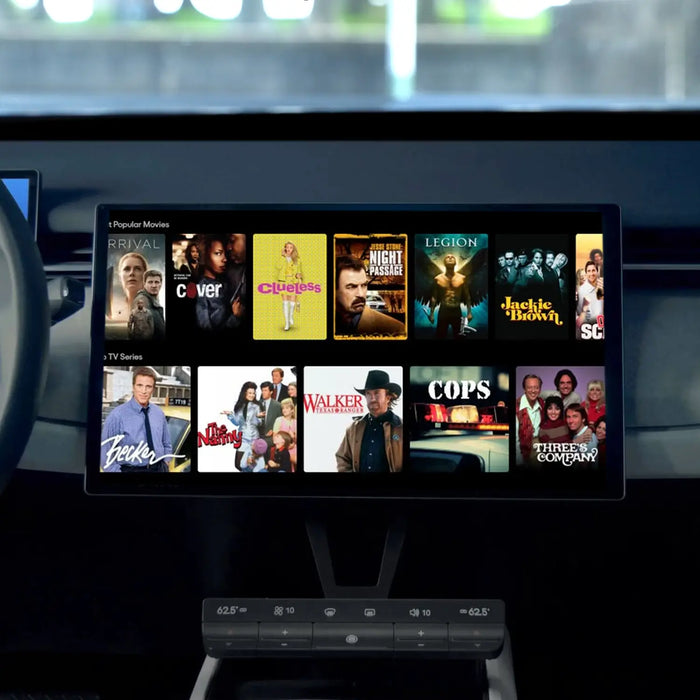
Wireless CarPlay adapters differ significantly from traditional Bluetooth devices in terms of functionality, performance, and user experience. While both technologies enable wireless connectivity, their underlying mechanisms and capabilities set them apart.
-
Data Transfer Speed and Bandwidth
Traditional Bluetooth devices operate on limited bandwidth, making them suitable for basic tasks like hands-free calling or streaming audio. However, they struggle with high-data-demand applications. Wireless CarPlay adapters, on the other hand, leverage Wi-Fi Direct technology. This allows them to handle data-intensive tasks such as real-time navigation, high-quality music streaming, and voice commands without lag or interruptions. -
Connection Stability
Bluetooth connections can become unstable in environments with multiple devices competing for the same frequency. This often leads to dropped calls or interruptions in audio playback. Wireless CarPlay adapters mitigate this issue by transitioning to Wi-Fi for data transfer. This ensures a more stable and reliable connection, even when your car infotainment system is managing multiple devices simultaneously. -
Functionality Scope
Traditional Bluetooth devices are primarily designed for single-purpose use, such as audio streaming or phone calls. Wireless CarPlay adapters offer a more integrated experience. They enable you to access your smartphone's ecosystem directly through your car infotainment system. This includes apps for navigation, messaging, and entertainment, all controlled via your car's touchscreen or voice commands. -
Ease of Use
Pairing a traditional Bluetooth device often requires manual intervention each time you enter your vehicle. Wireless CarPlay adapters streamline this process. Once paired, they automatically connect to your smartphone whenever you start your car, saving you time and effort. -
Audio and Visual Synchronization
Bluetooth devices sometimes suffer from audio lag, especially during video playback. Wireless CarPlay adapters optimize synchronization between audio and visual elements, ensuring a seamless experience whether you're watching a video or following navigation prompts.
Note: Wireless CarPlay adapters are designed to enhance your driving experience by integrating your smartphone with your car infotainment system. This makes them a superior choice for modern vehicles.
These differences highlight why wireless CarPlay adapters are becoming the preferred choice for drivers seeking a more advanced and seamless connection between their smartphones and car infotainment systems.
Bluetooth Channel Occupancy in Car Infotainment Systems
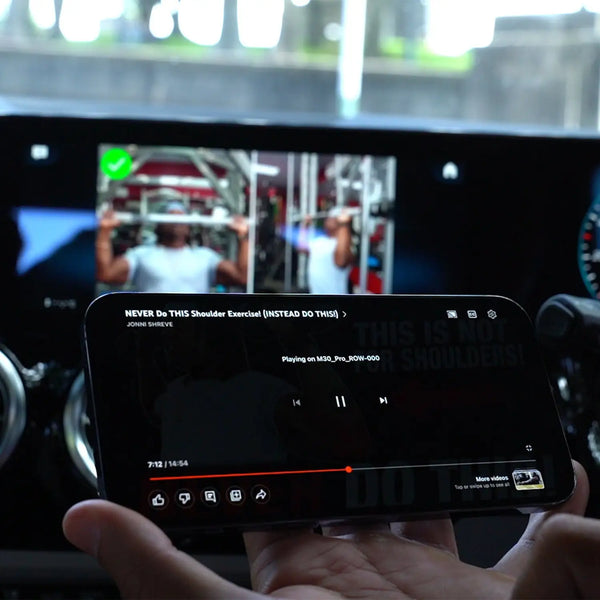
Bluetooth Channel Allocation in Cars
Modern car infotainment systems rely on Bluetooth technology to manage wireless connections. Each Bluetooth device operates on a specific channel within the 2.4 GHz frequency band. Your car's infotainment system allocates these channels dynamically to ensure smooth communication between devices.
Bluetooth Low Energy (LE) technology plays a crucial role in optimizing channel allocation. It reduces interference by using adaptive frequency hopping, which switches channels rapidly to avoid congestion. This ensures that your devices, such as smartphones and wireless CarPlay adapters, maintain stable connections even in crowded environments.
Tip: To minimize interference, avoid using multiple Bluetooth devices simultaneously in areas with high wireless traffic.
Managing Multi-device Connections
Car infotainment systems often handle multiple Bluetooth devices at once, including smartphones, headsets, and wireless adapters. Managing these connections requires advanced protocols to prevent conflicts and maintain performance.
Bluetooth LE Audio enhances this process by improving audio quality and enabling simultaneous broadcasting to multiple devices. Auracast™, a feature of Bluetooth LE, allows your car to act as a Bluetooth radio station, connecting multiple headsets or earbuds without compromising sound quality. Additionally, energy-efficient protocols extend battery life by up to 90%, ensuring that your devices remain functional during long drives.
|
Feature |
Description |
|---|---|
|
Bluetooth LE Audio |
Enhances audio quality and allows broadcasting to multiple devices simultaneously. |
|
Auracast™ |
A capability that enables a Bluetooth LE radio station to connect multiple headsets or earbuds. |
|
Energy Efficiency |
Increases battery life by up to 90% compared to traditional Bluetooth connections. |
These advancements ensure that your car infotainment system can seamlessly manage multi-device connections, providing a hassle-free driving experience.
Impact on Bluetooth Calling and Music Streaming
Bluetooth channel occupancy directly affects calling and music streaming in your car. When multiple devices compete for bandwidth, you may experience dropped calls or interruptions in audio playback. Wireless CarPlay adapters address this issue by transitioning to Wi-Fi for data transfer, freeing up Bluetooth channels for other tasks.
For example, while your adapter uses Wi-Fi for navigation and app integration, Bluetooth remains available for hands-free calling and music streaming. This separation of tasks ensures that your car infotainment system delivers consistent performance across all connected devices.
Note: Regularly updating your car infotainment system's firmware can further optimize Bluetooth channel usage and improve overall connectivity.
How Wireless CarPlay Adapters Optimize Channel Usage
Wireless CarPlay adapters play a pivotal role in optimizing Bluetooth channel usage within your car infotainment system. By intelligently managing connections and transitioning to Wi-Fi for data-intensive tasks, these adapters ensure that your system operates efficiently without compromising performance.
Efficient Channel Allocation
Wireless CarPlay adapters reduce the strain on Bluetooth channels by offloading high-bandwidth tasks to Wi-Fi. This approach frees up Bluetooth for essential functions like hands-free calling and audio streaming. As a result, your car infotainment system can handle multiple devices simultaneously without experiencing interruptions or lag.
Tip: To maximize channel efficiency, ensure your wireless CarPlay adapter is configured correctly and your car's system firmware is up-to-date.
Adaptive Frequency Management
These adapters utilize advanced frequency management techniques to minimize interference. By dynamically switching between channels, they avoid congestion and maintain stable connections. This adaptive approach ensures that your car infotainment system delivers consistent performance, even in environments with heavy wireless traffic.
Seamless Multi-device Integration
Wireless CarPlay adapters streamline multi-device connectivity by prioritizing tasks based on bandwidth requirements. For example:
-
Navigation and app integration rely on Wi-Fi for high-speed data transfer.
-
Bluetooth channels remain available for simultaneous music streaming and phone calls.
This separation of tasks ensures that your car infotainment system operates smoothly, providing a hassle-free driving experience.
Enhanced Audio Synchronization
Audio lag can disrupt your experience during calls or media playback. Wireless CarPlay adapters address this issue by optimizing synchronization between Bluetooth and Wi-Fi channels. This ensures that sound quality remains clear and uninterrupted, whether you're listening to music or following navigation prompts.
Note: Regularly updating your wireless CarPlay adapter's firmware can further enhance audio synchronization and overall system performance.
Wireless CarPlay adapters are designed to work harmoniously with your car infotainment system, ensuring that every connection is optimized for speed, stability, and reliability.
Benefits and Challenges of Wireless CarPlay Adapters
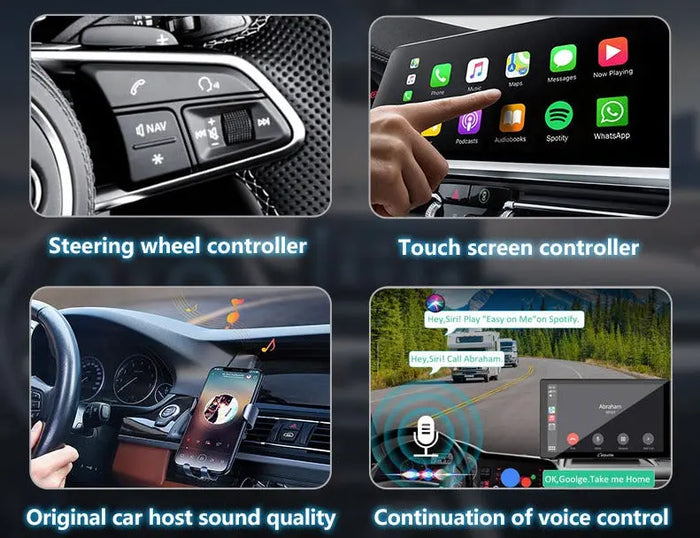
Convenience and Reduced Cable Clutter
Wireless CarPlay adapters simplify your driving experience by eliminating the need for physical cables. You no longer have to untangle wires or search for compatible connectors. Once paired, the adapter automatically connects your smartphone to your car infotainment system every time you start your vehicle.
This streamlined setup enhances the aesthetic of your car interior. Without cables cluttering your dashboard, your space feels cleaner and more organized. Additionally, wireless connectivity allows you to focus on driving while accessing essential features like navigation, music, and calls.
Tip: To maintain optimal performance, store your wireless CarPlay adapter in a location with minimal interference from other devices.
Connectivity Issues and Potential Lag
Wireless CarPlay adapters rely on Wi-Fi for data transfer, which can occasionally face connectivity challenges. Factors like signal interference or outdated firmware may cause temporary disruptions. You might notice slight delays in audio playback or app responsiveness during high-demand tasks.
To minimize these issues, ensure your adapter’s firmware is up-to-date. Regular updates improve compatibility and optimize performance. Positioning the adapter away from other wireless devices also reduces interference. While occasional lag may occur, the convenience of wireless integration outweighs these minor challenges.
Note: If you experience frequent connectivity problems, check your car infotainment system’s compatibility with wireless CarPlay adapters.
Compatibility with Older Systems
Not all car infotainment systems support wireless CarPlay adapters. Older systems may lack the necessary hardware or software to establish a seamless connection. Before purchasing an adapter, verify your car’s compatibility to avoid frustration.
Some adapters, like CARLUEX, are designed to bridge the gap between older systems and modern technology. These adapters offer enhanced compatibility features, ensuring that even older vehicles can benefit from wireless CarPlay. By choosing the right adapter, you can enjoy advanced functionality without upgrading your entire infotainment system.
Tip: Consult your car manufacturer’s specifications or contact the adapter provider for compatibility details.
How CARLUEX Adapters Solve User Pain Points
CARLUEX wireless CarPlay adapters are designed to address the most common challenges users face with wireless connectivity. These adapters combine advanced technology with user-centric features to deliver a seamless experience.
Simplified Troubleshooting
CARLUEX adapters make resolving connectivity issues straightforward. If you encounter problems, you can follow these steps to quickly restore functionality:
-
Restart your iPhone, car infotainment system, and the adapter to clear temporary glitches.
-
Verify that your vehicle and adapter support wireless CarPlay.
-
Check the USB port connection and observe the adapter’s status light for any irregularities.
-
Test the adapter in another vehicle to determine if the issue lies with the car or the device.
-
Update the adapter’s firmware to access the latest bug fixes and performance enhancements.
-
Contact CARLUEX’s responsive customer support team for additional assistance.
These steps ensure you can resolve most issues without professional help, saving you time and effort.
Proven Performance
CARLUEX adapters have received positive feedback from both users and reviewers. For instance:
-
Schaz reviewed the CARLUEX Pro Plus, praising its robust features and reliable performance.
-
Ministry of Reviews evaluated the CARLUEX Air adapter, highlighting its ease of use and seamless integration with various car systems.
These reviews demonstrate the effectiveness of CARLUEX adapters in delivering a hassle-free wireless CarPlay experience.
Tip: Regularly updating your adapter’s firmware ensures optimal performance and compatibility with your car infotainment system.
CARLUEX adapters stand out by addressing user pain points with practical solutions and reliable performance. Whether you’re upgrading an older system or seeking a smoother wireless experience, CARLUEX ensures your journey remains connected and stress-free.
Tips for Optimizing Your Car Infotainment System
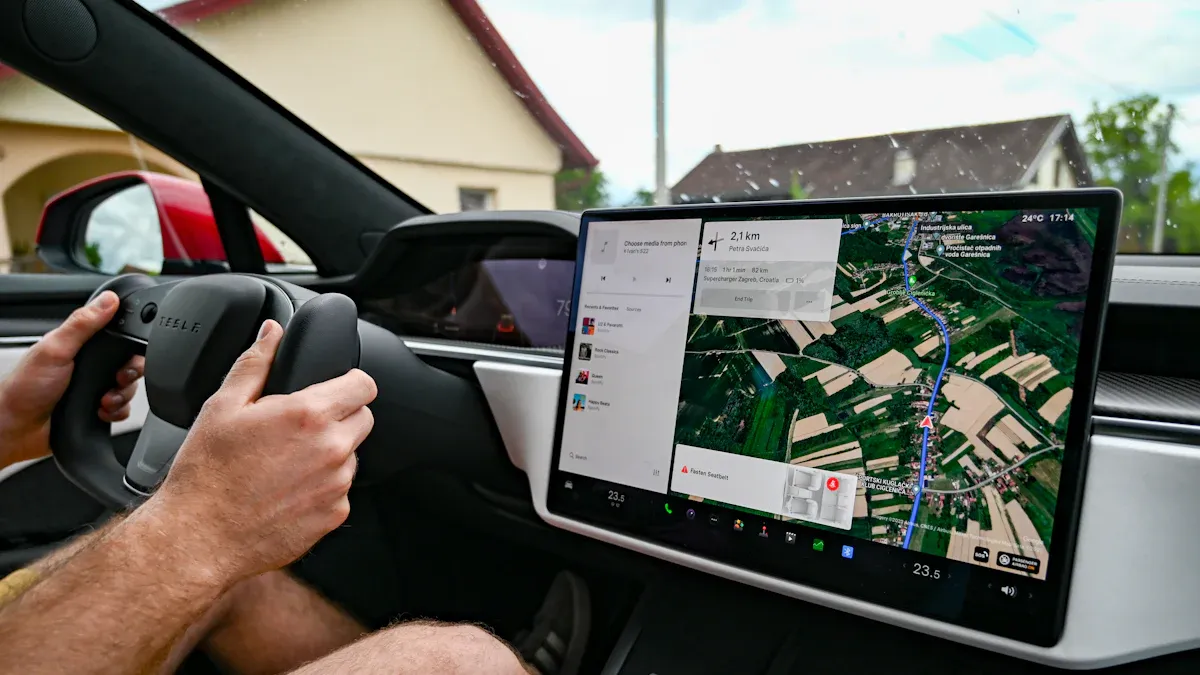
Ensuring Compatibility with Wireless CarPlay
Before using a wireless CarPlay adapter, confirm that your car infotainment system supports this feature. Check your vehicle’s manual or consult the manufacturer’s website for compatibility details. If your system is older, consider adapters like CARLUEX, which are designed to bridge the gap between legacy systems and modern wireless technology.
You can also verify compatibility by testing the adapter in your car. Ensure the USB port functions correctly and supports data transfer. If you encounter issues, restarting your system or updating its software may resolve them. For additional assistance, your dealership can provide expert guidance on setup and customization.
Tip: Keep your adapter’s firmware updated to ensure compatibility with the latest smartphone operating systems.
Reducing Bluetooth Interference
Wireless environments can become crowded, especially in urban areas. To reduce Bluetooth interference, limit the number of active devices connected to your car's infotainment system. For example, disconnect unused devices like headphones or smartwatches when driving.
Position your wireless CarPlay adapter away from other wireless devices to minimize signal overlap. Bluetooth Low Energy (LE) technology in modern systems helps mitigate interference by dynamically switching channels. However, maintaining a clear line of sight between your adapter and smartphone can further enhance connectivity.
Note: Avoid placing metallic objects near your adapter, as they can disrupt wireless signals.
Updating Firmware for Better Performance
Firmware updates are essential for optimizing your car's infotainment system. These updates improve compatibility, fix bugs, and enhance overall performance. Check your system’s settings menu or the manufacturer’s website for available updates.
Updating your wireless CarPlay adapter’s firmware is equally important. Most adapters provide an app or web interface for this purpose. Regular updates ensure your adapter remains compatible with new smartphone features and operating systems. If you experience issues like lag or connectivity drops, a firmware update often resolves them.
Pro Tip: Schedule firmware checks monthly to keep your system running smoothly.
Maintaining a Stable Wi-Fi Connection
A stable Wi-Fi connection is essential for ensuring your wireless CarPlay adapter performs at its best. Without it, you may experience interruptions in navigation, music streaming, or voice commands. To maintain a reliable connection, you need to focus on optimizing your car’s wireless environment and monitoring network performance.
Optimize Your Adapter Placement
Position your wireless CarPlay adapter in a location that minimizes interference. Avoid placing it near metallic objects or other wireless devices that could disrupt the signal. Keeping the adapter within a clear line of sight of your smartphone can also enhance connectivity.
Tip: Place the adapter in a central location within your vehicle to ensure even signal distribution.
Monitor Network Stability
Regularly testing your network’s stability can help you identify and resolve potential issues. Use tools like Obkio’s Network Monitoring Tool to evaluate key metrics such as latency, jitter, packet loss, and throughput. These metrics provide valuable insights into your connection quality and help you pinpoint areas for improvement.
-
Latency: Measures the delay in data transmission. Lower latency ensures faster response times.
-
Jitter: Indicates variations in data packet delivery. Consistent jitter levels improve audio and video quality.
-
Packet Loss: Tracks the percentage of data packets that fail to reach their destination. Minimizing packet loss enhances overall reliability.
-
Throughput: Reflects the amount of data successfully transmitted over the network. Higher throughput supports smoother performance.
Update Firmware Regularly
Firmware updates often include enhancements that improve Wi-Fi stability. Check for updates through your adapter’s app or web interface. Keeping your adapter’s firmware current ensures compatibility with the latest smartphone features and reduces the risk of connectivity issues.
Pro Tip: Schedule monthly checks for firmware updates to maintain peak performance.
By following these steps, you can create a stable Wi-Fi environment that supports seamless integration between your smartphone and car infotainment system. A reliable connection ensures you enjoy all the benefits of wireless CarPlay without interruptions.
Wireless CarPlay adapters transform how you interact with your car infotainment system by seamlessly integrating your smartphone through Bluetooth and Wi-Fi. Their practicality is evident in their ability to reduce cable clutter while enhancing convenience. With the market projected to reach USD 3.9 billion by 2024, their growing importance is undeniable. Over 50% of car buyers now consider CarPlay essential, reflecting its role in modern driving experiences. CARLUEX adapters stand out for their reliability and compatibility, making them an excellent choice for upgrading your vehicle’s connectivity.
FAQ
How do I know if my car supports wireless CarPlay adapters?
Check your car’s manual or the manufacturer’s website for compatibility details. Look for USB ports that support data transfer and CarPlay functionality. If unsure, test the adapter in your vehicle or consult your dealership for expert advice.
Can I use a wireless CarPlay adapter with multiple smartphones?
Yes, most adapters allow pairing with multiple devices. However, only one smartphone can connect at a time. To switch devices, disconnect the current phone and pair the new one. CARLUEX adapters simplify this process with intuitive settings.
Will a wireless CarPlay adapter affect Bluetooth calling?
No, wireless CarPlay adapters use Wi-Fi for data transfer, leaving Bluetooth channels free for calling. This separation ensures uninterrupted hands-free communication while maintaining high-quality audio.
How do I update the firmware on my wireless CarPlay adapter?
Most adapters provide an app or web interface for firmware updates. Connect your adapter to the app, check for available updates, and follow the instructions. Regular updates improve performance and compatibility with new smartphone features.
What should I do if my wireless CarPlay adapter disconnects frequently?
Restart your car infotainment system, smartphone, and adapter to resolve temporary glitches. Ensure the adapter is positioned away from metallic objects or other wireless devices. Update the firmware to fix bugs and enhance stability.

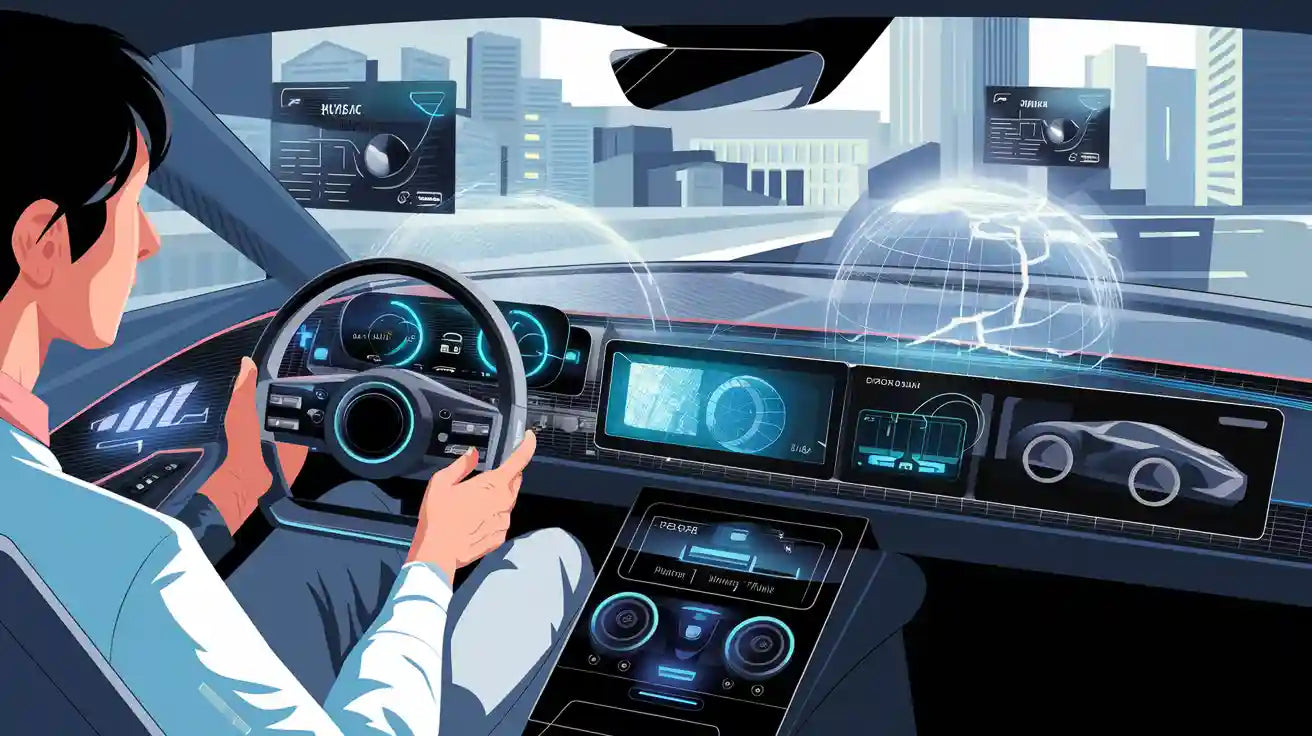
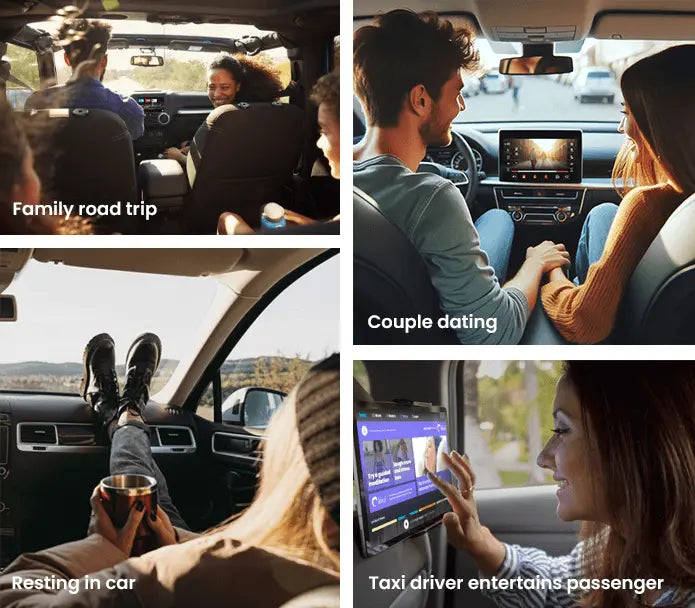





Lämna en kommentar
Alla kommentarer modereras innan de publiceras.
Denna webbplats är skyddad av hCaptcha och hCaptchas integritetspolicy . Användarvillkor gäller.